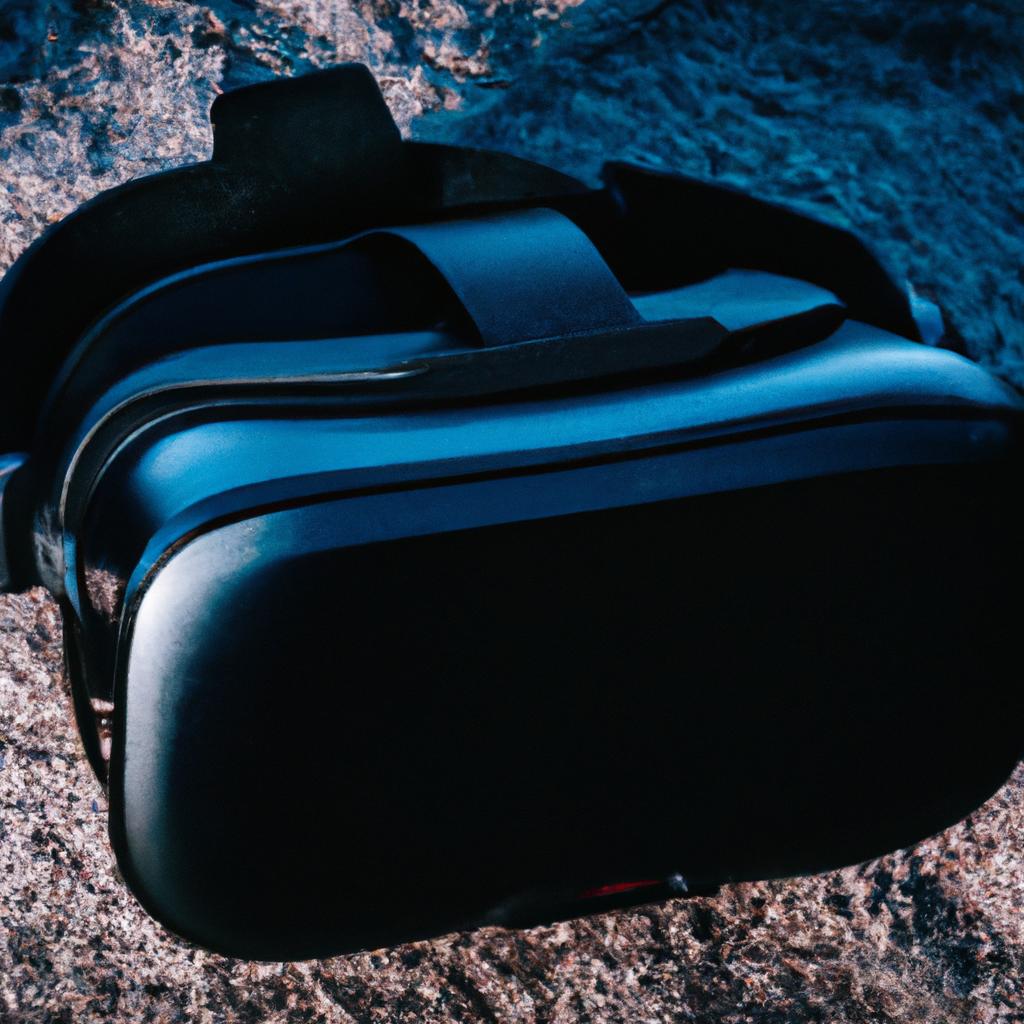Introduction: Virtual and Augmented Reality in Marketing
Virtual reality (VR) and augmented reality (AR) have become increasingly popular technologies for businesses to leverage when creating their marketing campaigns. This guide will provide an introduction to VR/AR, discuss the different pros and cons associated with both technologies, and provide real-world examples of brands that have successfully implemented VR/AR in their marketing strategies.
VR is a computer-generated simulation of a three-dimensional environment, while AR overlays digital elements onto existing environments. Both technologies have been used by organizations to engage customers in new and exciting ways and create immersive experiences that are difficult to achieve through traditional marketing tactics.
Pros of VR (Virtual Reality) in Marketing
In recent years, virtual reality (VR) technology has become increasingly popular in the world of marketing. This is due to the fact that it allows companies to reach out to their customers in an immersive and engaging way that was previously unheard of. Here are some of the pros of incorporating virtual reality into your marketing campaign:
- VR can be used to create highly realistic experiences that draw the user in and keep them engaged with the content.
- Interactive elements create a sense of control and ownership over the experience, encouraging users to explore and learn more about the product or service being promoted.
- It can be used to show off a product or service in unique, creative ways that engage viewers and appeal to their emotions.
- Examples of successful VR campaigns include McDonald’s “Happy Goggles” VR experience, and American Express’s “VR Adventure” for cardholders.
Cons of VR in Marketing
Virtual Reality (VR) technology has advanced significantly in recent years, and many brands have started taking notice. However, the increased popularity of VR also comes with its own set of challenges that any business should consider before launching a VR-based marketing campaign. The costs associated with creating and deploying VR experiences can be high, as is the cost of ensuring the hardware is up to date and optimized for the target audience. Additionally, there are technical limitations to consider. For example, some VR experiences require large amounts of data to run properly, which can have an impact on the user experience.
Additionally, the user pool of people with access to VR technology is still relatively small. Making sure the campaign is able to reach the desired audience is essential in order for it to be effective, but this may prove difficult due to the limited availability of VR headsets and other devices.
Overall, before launching a VR-based marketing campaign, it is important to thoroughly research the associated costs, limitations, and target audience to ensure the campaign is successful and cost-effective.
Pros of AR (Augmented Reality) in Marketing
Augmented reality (AR) is an immersive technology that overlays digital data or objects on a real environment. As such, it offers marketers a unique opportunity to create engaging and interactive experiences for their customers. Here are the key benefits that come with using AR in marketing campaigns:
- AR helps marketers appeal to younger audiences who are more tech savvy.
- It helps create memorable customer experiences which can make your brand stand out.
- It gives brands a chance to be creative and inventive with their campaigns.
- It enables brands to launch campaigns on a relatively small budget.
- It can provide customers with product information in a more convenient and informative way.
There are many examples of successful AR campaigns from well-known brands, such as Coca-Cola’s ‘Share A Coke’ which allowed customers to customize their own Coke bottle using AR, and Snapchat’s ‘World Lenses’ which let users interact with 3D characters and objects.
Cons of AR (Augmented Reality) in Marketing
Using augmented reality in marketing comes with its own set of challenges and limitations. One major challenge is the cost associated with creating innovative AR experiences for customers. Because of the complexity of the technology, the cost of implementing an AR campaign can be very high. Additionally, there are certain legal considerations to keep in mind when utilizing AR, such as protecting intellectual property and avoiding any potential copyright infringement.
There are also technological limitations that need to be taken into consideration. For example, many mobile devices may not have the specifications necessary to run complex AR applications. In addition, network speeds may not be fast enough to handle AR content, making it difficult to deliver a smooth user experience.
Analysis of ROI (Return on Investment) when Comparing VR and AR in Marketing
For many businesses, return on investment (ROI) is an important factor when considering whether to integrate virtual and augmented reality into their marketing campaigns. It’s important to understand the cost versus benefit of using each technology before making a decision.
When it comes to ROI, much of it depends on the type of product or service you offer. For example, if you are selling a physical product, investing in augmented reality applications may be more cost-effective than investing in virtual reality applications.
When looking at market trends associated with VR and AR, there are some interesting developments. For example, one survey found that 84% of consumers believe that augmented reality will have a positive impact on their purchasing decisions. Additionally, the same survey found that 55% of respondents said that they would be interested in trying out products virtually before buying them. This indicates that there is a potential for increased ROI if augmented reality and virtual reality are used in marketing campaigns.
When considering the ROI associated with virtual and augmented reality, it is important to weigh up the costs associated with development, implementation, and maintenance against the potential for increased sales and customer engagement.
Approaches to Increasing Customer Engagement via VR/AR
As businesses explore new ways to reach their audiences, virtual reality (VR) and augmented reality (AR) have emerged as powerful tools to attract customers and boost engagement. VR is a fully immersive experience that allows users to interact with 3D environments, while AR digitally overlays images and information into a physical space. Together, these two technologies can create unique opportunities for companies to engage with their target audiences and drive conversions.
Connecting with customers through VR/AR experiences can be challenging, but here are some tips for successfully incorporating the technology into your marketing strategy:
- Develop an engaging story: Before creating a VR/AR experience, it’s important to develop an engaging narrative that will draw in and captivate customers.
- Make it interactive: Give customers a chance to interact with the experience and customize it to their own preferences.
- Focus on virtual immersion: Develop a virtual environment that immerses customers, making them feel like they are part of the experience instead of just observing it.
- Choose the right hardware: Select the right type of hardware for the VR/AR experience. For example, Google Cardboard and Samsung Gear VR are great choices for mobile VR, while Oculus Rift and HTC Vive are ideal for PC-based VR.
- Encourage social sharing: Make sure customers can easily share their VR/AR experience with friends and family.
By following these tips for creating engaging VR/AR experiences, businesses can boost customer engagement and drive more conversions.
Creative Tools for VR/AR Marketing Campaigns
With the advancements of virtual and augmented reality, there has been an explosion of creative tools that can be utilized to help brands launch successful campaigns. Whether you’re looking to create an immersive experience or captivate your audience with augmented reality, there’s a tool out there that can help make it happen.
When it comes to virtual reality, platforms like Unity and Unreal Engine are widely popular and provide powerful capabilities for creating stunning 3D environments that users can explore in full 360 degrees. Unity and Unreal Engine are also great for making interactive experiences, where users can actually interact with the objects in the virtual world.
For augmented reality, there are several mobile applications such as Zappar and Layar that enable marketers to quickly create interactive content for mobile devices. These apps allow users to aim their phone at a certain object or image and see an augmented reality animation superimposed over the image. This adds a layer of fun and interactivity to an everyday experience, and helps marketers engage their audiences in new ways.
Other creative tools, such as Spark AR Studio, let marketers create augmented reality experiences on Instagram, Snapchat, and Facebook. With Spark AR, marketers can create custom AR experiences that users can access from their phones without having to download any applications. This makes for a much simpler user experience.
When it comes to implementing and launching a successful VR/AR marketing campaign, these tools can make a huge difference. Make sure to research the different options available and find the one that best fits your needs.
A Comparison of Popular AR/VR Hardware
When it comes to virtual reality (VR) and augmented reality (AR) technologies, there is a variety of hardware available on the market. Two of the most popular pieces are Oculus Rift and Google Cardboard. While both of these devices can help you to experience virtual or augmented reality, there are some important differences between them that marketers should consider when looking for the best option.
Oculus Rift
Oculus Rift is a headset designed for use in virtual reality (VR). It features an advanced display with higher resolution than many other VR headsets, as well as two motion-tracking controllers. This allows users to dive deeply into VR experiences, as they can move and interact with the virtual world. It also has built-in audio, so that users can hear what’s happening in the virtual world and learn about the content more easily.
Google Cardboard
Google Cardboard is a less-advanced VR headset, designed to be used with a smartphone. It is significantly lower-cost than the Oculus Rift and easier to set up, but does not have the same level of immersion. The headset is designed to fit around a phone, so users can use their phone’s screen and audio to experience virtual reality. However, it does not come with motion-tracking controllers, and the display is not as good as the Rift.
When selecting a VR or AR device for marketing, marketers should consider the cost, ease of setup, and quality of experience offered by each device. While Oculus Rift offers a more immersive and engaging experience, it is also more expensive and requires additional setup time. Google Cardboard is a more affordable option, but may be less engaging for the user. It is important to weigh the pros and cons of each device to decide which one is best for your campaign.
Examples of Companies Utilizing VR/AR Marketing Campaigns
Virtual and augmented reality have been used in many successful marketing campaigns by many different companies. For example, Samsung released a virtual reality roller coaster experience in 2015 as part of the Galaxy S6 launch. The campaign was so successful that it won the Best Use of Virtual Reality award at the 2016 Cannes Lions Creative Festival.
The clothing brand, Gap, also saw success with their virtual reality shopping experience which allowed customers to virtually “try on” clothes. This campaign resulted in an increase in sales and customer engagement.
In addition, Lowe’s has used augmented reality to help customers visualize home décor products in their own spaces. This gave customers the chance to “try before they buy,” increasing customer satisfaction and leading to more sales.
These examples demonstrate how virtual and augmented reality can be used effectively to reach customers in creative ways. With the right approach, businesses of all sizes can benefit from these new technologies.
Legal Considerations of Using VR/AR Marketing Campaigns
When using virtual and augmented reality as part of a marketing strategy, brands must consider the legal implications of their campaigns. It is important to ensure that all intellectual property used in a campaign is protected, and that there are no legal violations concerning industry regulations and/or copyright infringement. Brands must ensure they have the proper authorization for any content used, and must also be aware of any country-specific regulations that may apply.
Brands should also be aware that the use of personal data or customer information collected via VR/AR campaigns may need to be compliant with the data protection regulations of the country in which it was collected. Companies must create clear terms and conditions outlining how customer data is used within the campaign, and provide the users an option to opt-out.
Final Thoughts: How Will Virtual and Augmented Reality Continue to Shape the Marketing Industry?
Virtual reality (VR) and augmented reality (AR) continue to be major players in the marketing industry. As technology advances, the potential for marketing with VR and AR is becoming more and more available. Companies are jumping at the chance to leverage their marketing strategies and create unique experiences through these immersive technologies.
The power of VR and AR lie in their ability to create engaging and memorable experiences with customers. The use of these technologies can also help to reduce costs by providing real-time interactivity and data insights. VR and AR are already being used to create virtual store spaces, product demos, and other marketing experiences – and this trend is expected to continue into the future.
As virtual and augmented reality become more accessible to businesses, it’s likely that they will become an integral part of marketing efforts. In the near future, different types of technology will need to be integrated in order to create the best customer experience – and VR and AR will play a major role in this.
There is still much to learn about the effects of VR and AR on marketing, but the evidence so far suggests that these technologies are here to stay. With the right strategy, companies can capitalize on the powerful potential of these technologies to engage customers and grow their business.
comments: 0











